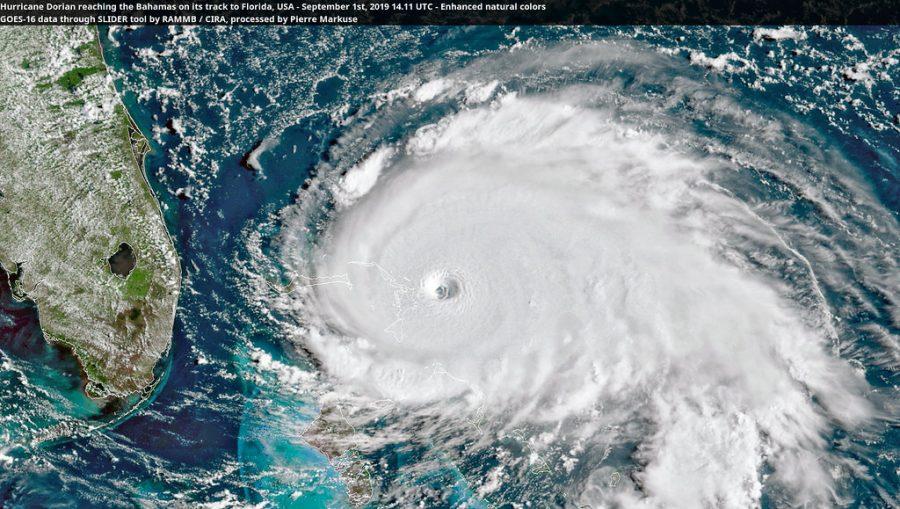On Aug. 24, Hurricane Dorian formed as a result of a tropical wave and later caused massive destruction along the Atlantic coast. The storm later progressed into a category five hurricane. Hurricane Dorian severely damaged the Bahamas when it hit the islands as a category five hurricane on Sept. 1. Over 70,000 people in Great Bahama and Abaco Island are now homeless due to the harsh winds and water surges that Dorian caused.
“If I lived in the bahamas I wouldn’t even know what to do. So many people have lost so many things, including houses,” junior Claire Fisher said.
Although Florida, Georgia, North Carolina, South Carolina and various other states called for a state of emergency in the United States, they remained unscathed for the most part. The exception was on the coast of Cape Hatteras, North Carolina, where wind speeds were reported as high as 98 miles per hour.
Dorian moved slowly up the eastern coast of the United States and was demoted to a category three storm. When Dorian reached Cape Hatteras, it had continued to weaken and turned into a Category one hurricane, so luckily the damage was minimal.
“I am thankful that the storm did not become worse, but I think it is a result of climate change so we need to do more to help preserve the earth. If we took action now, more tragedies like this could be prevented,” junior Alexa Seefeldt said.
After Dorian briefly skimmed the coast of North Carolina, the storm moved upwards again towards Nova Scotia. By Sept. 7, Dorian became post-tropical and made landfall on Nova Scotia with 100 mile per hour winds. There are 46 direct fatalities so far from Dorian and seven indirect deaths. There are many people in the Bahamas who have lost everything and it is likely that it will take many years to repair the billions of dollars in damage caused by Hurricane Dorian.
Hurricane Dorian damages Atlantic Coast
September 11, 2019
Image via Flickr
Hurricane Dorian is causing lasting damage for people in the Bahamas and eastern coastline. The storm has already caused upwards of $7 billion in damage.
0
More to Discover








